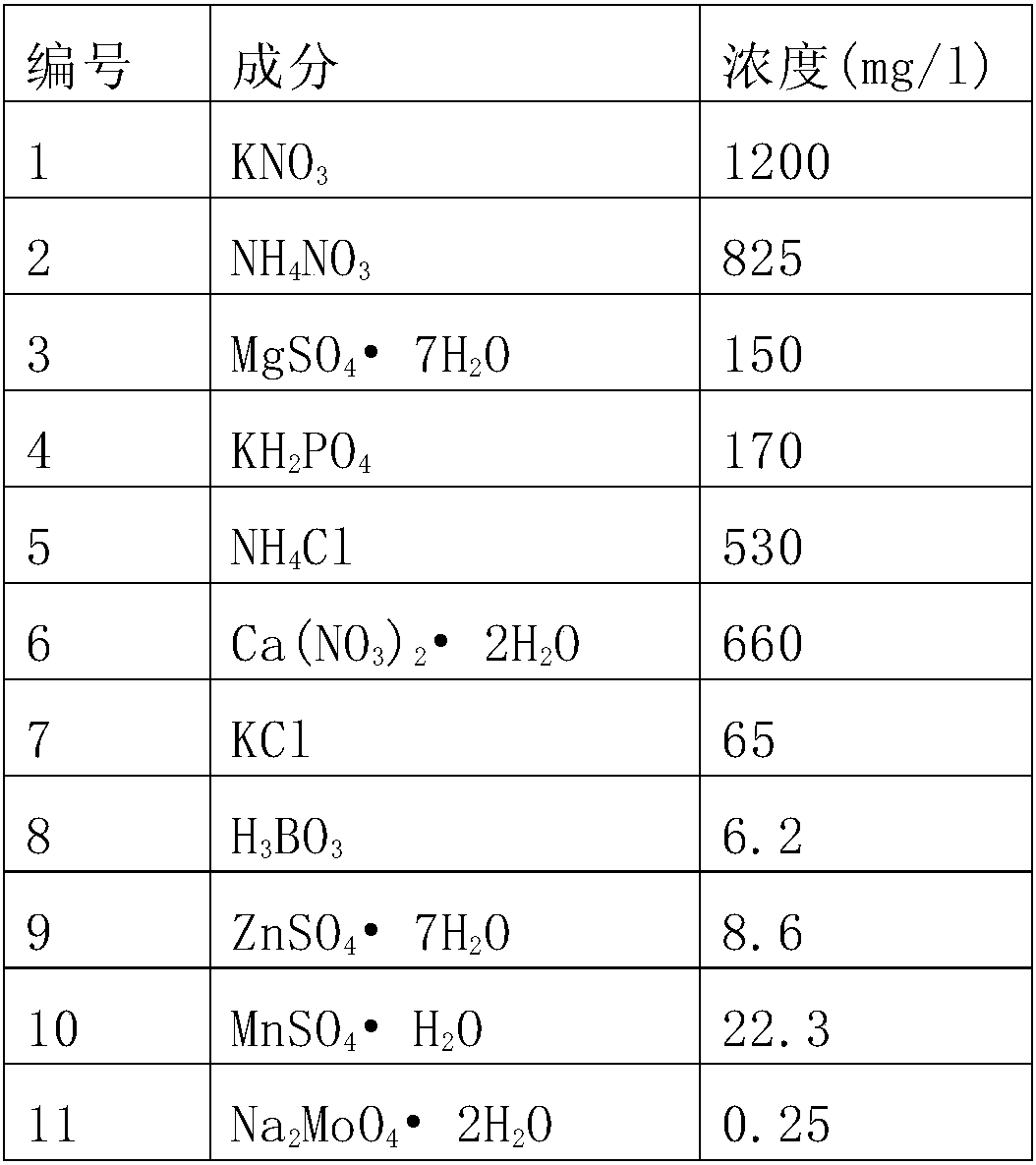In-vitro generation method for direct adventitious shoots of clematis plants
A technology of clematis and clematis, which is applied in the field of direct adventitious bud generation of clematis plants in vitro, and can solve the problems of low frequency of adventitious bud occurrence, unsuitable for sexual reproduction, and limited application of garden cultivation.
- Summary
- Abstract
- Description
- Claims
- Application Information
AI Technical Summary
Problems solved by technology
Method used
Image
Examples
Embodiment 1
[0076] (1) Preparation of basal medium (Mulan basal medium, ML medium for short): prepare basal medium according to Table 1, pH 5.8, and sterilize at 121° C. for 15-25 minutes. Both induction and elongation of adventitious buds use this medium.
[0077] Table 1List of components of ML medium
[0078]
[0079]
[0080] (2) Materials: Clematis freshly extracted branches in early March (acquired from Shanghai Institute of Biological Sciences, Chinese Academy of Sciences), counting 2-3 twigs from the top down. When collecting materials on the spot, care should be taken not to select materials with a high degree of lignification.
[0081] (3) Wash the fresh branches with tap water, blot the surface water droplets, disinfect with 70% ethanol for 30-90 seconds on the ultra-clean workbench, soak in 0.1% mercuric chloride for 10-14 minutes, rinse with sterile water 5-8 times, dry the water droplets on the surface of the sterile material with sterile filter paper, remove the ste...
Embodiment 2
[0092] The steps of this embodiment are basically the same as in Embodiment 1, except that Clematis celery leaf is used.
[0093] The experimental procedure was repeated three times, and the average number of regenerated plants produced by each stem section with internodes was similar to the number of regenerated plants obtained by the clematis in Example 1 of the present invention, and was highly consistent with the parental phenotype, and each node The reproduction coefficient of segment, adventitious bud induction rate, rooting rate, transplanting survival rate all can reach the similar result of the clematis of the embodiment of the present invention 1.
[0094] Therefore, the Clematis celery leaf cultivated by the method of the present invention has very high adventitious bud induction rate, rooting rate and transplanting survival rate.
Embodiment 3
[0096] The steps of this embodiment are basically the same as those in Embodiment 1, except that Clematis broadleaf (also known as Clematis whole margin) is used.
[0097] The experimental procedure was repeated three times, and the average number of regenerated plants produced by each stem section with internodes was similar to the number of regenerated plants obtained by the clematis in Example 1 of the present invention, and was highly consistent with the parental phenotype, and each node The reproduction coefficient of segment, adventitious bud induction rate, rooting rate, transplanting survival rate all can reach the similar result of the clematis of the embodiment of the present invention 1.
[0098] Therefore, the broad-leaved clematis cultivated by the method of the present invention has very high adventitious bud induction rate, rooting rate and transplanting survival rate.
PUM
| Property | Measurement | Unit |
|---|---|---|
| Length | aaaaa | aaaaa |
Abstract
Description
Claims
Application Information
 Login to View More
Login to View More - Generate Ideas
- Intellectual Property
- Life Sciences
- Materials
- Tech Scout
- Unparalleled Data Quality
- Higher Quality Content
- 60% Fewer Hallucinations
Browse by: Latest US Patents, China's latest patents, Technical Efficacy Thesaurus, Application Domain, Technology Topic, Popular Technical Reports.
© 2025 PatSnap. All rights reserved.Legal|Privacy policy|Modern Slavery Act Transparency Statement|Sitemap|About US| Contact US: help@patsnap.com



